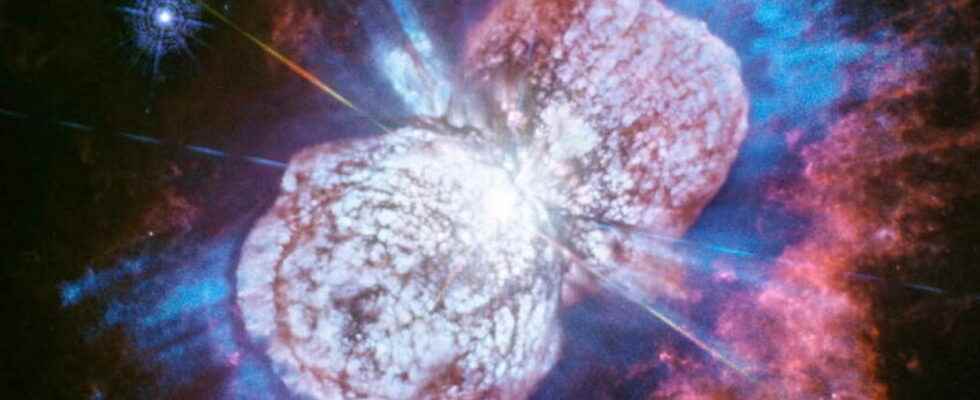SECRET OF STARS. The stars visible to the naked eye are very much alive when we look at them. One of them, however, could eventually die out.
By Florian Freistetter
© HO / ESA / Hubble / AFP
Published on
Sknow it: the stars that we admire in the sky at night are actually not where we observe them. Better: many are long gone – an assertion repeated ad nauseam. Fascinating as it is, it is no less… false.
In principle, of course, it is true that to look up into the cosmos is always to see into the past. Certainly, light travels at the phenomenal speed of 299,792.458 kilometers per second; but the distances between the stars are even more gigantic. Therefore, their light takes centuries, even millennia, to reach us. We therefore contemplate the stars as they were when the light started, from their point of emission to us. And, when observing distant galaxies, it is even possible to see billions of years in the past.
READ ALSO“The real discovery is to see the interior of the first galaxies”
When it comes to stars visible to the naked eye, however, the picture is not so impressive. These are stars in our own galaxy, the Milky Way, that are at most a few thousand light-years away. Their light has therefore been on its way to us for “only” a few thousand years. Compared to the typical lifetime of a star, which is a few billion years, this is a very short period.
Discover our series Star Secretsbased on excerpts from the book Stars by the German astronomer Florian Freistetter (Flammarion). A gallery of portraits of stars that tells both the Universe and the history of astronomy.
V1: the most important star in the universe
Eta Carinae: a hole in the constellation of Carina
51 Pegasi, the answer to a millennial question
S0-102: The Star on the Brink
The Star of Bethlehem: status symbol for a messiah
There is also the movement of the stars through the Milky Way, but, due to the enormous distances, it is little noticed. It can be recorded with very precise measuring instruments, but that does not change anything in the positions visible to the naked eye: one would have to watch very carefully, without interruption, for a few decades or centuries.
An attractive received idea
The stars we see are therefore exactly where we see them, and they almost certainly all still exist. But, of course, not forever. Each star ends its life at some point and ceases to shine when, within it, the fuel for nuclear fusion runs out. However, from observational data, it is possible to estimate quite accurately the remaining life of a star. Thus, there are very few stars around us whose life may end in the foreseeable future.
Eta Carinae is one of them: a huge star, located in the constellation bearing the beautiful name of “Carina” (Carina). It has a mass of 100 to 200 times that of the Sun; it is therefore one of the most massive stars that can exist. A star of this size also has a high temperature and shines brightly: the luminosity of Eta Carinae exceeds that of the Sun by a factor of 5 million. And the longer a star burns, the shorter its lifespan. Eta Carinae is less than 3 million years old and yet it has already consumed a large part of its reserves.READ ALSO The Gaia satellite delivers the largest chemical map of the Milky Way!
The fact that she is nearing the end of her life is also noticeable in her behavior. It indeed shows frequent explosions, which send portions of its outer layers into space. During one of these eruptions, in the middle of the XIXe century, it even became the second brightest star in the night sky for a time. Then it darkened again and was no longer visible to the naked eye at the beginning of the XXe century. Meanwhile, its brightness has increased further, and the next big eruption is only a matter of time. Soon it will completely explode and disappear from the sky.
When the hull will have its stellar hole, we will probably no longer be able to observe it. “Soon” must here be understood in an astronomical perspective. It will take at least a few tens or hundreds of thousands of years, maybe even a little more.
This article is from Stars. A story of the Universe in a hundred stars, by Florian Freistetter, Flammarion editions, November 2020, 463 pages, 25 euros.
